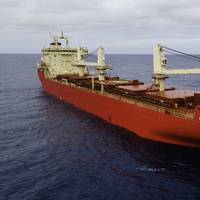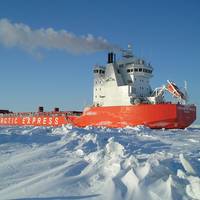Icebreaking Bulk Carrier Delivered to Fednav

Canadian dry bulk shipping company Fednav announced it has taken delivery of its latest Polar Class 4 icebreaking bulk carrier, Arvik I.Ordered through Sumitomo Corporation and built by Japan Marine United Corporation (JMU) shipyards in Japan, the 31,000-DWT mine resupply vessel is a sister ship to Fednav’s two other Polar Class 4 icebreaking bulk carriers, Nunavik, delivered in 2014, and the Canadian-flagged Umiak I delivered in 2006, currently the most powerful icebreaking bulk…
First Arctic Cargo Shipped through the Northwest Passage
Fednav, a Canadian-owned company and world leader in Arctic navigation, today announced that its vessel, the MV Nunavik sailed from Deception Bay en route to China via Canada's Northwest Passage, with a full cargo of nickel concentrate. The Nunavik will be one of the first commercial vessels to transit the Northwest Passage completely, and the first to do so unescorted with an Arctic cargo, and with Canadian expertise. The Nunavik is the most powerful conventional (non-nuclear) icebreaking bulk carrier in the world, and sails from Deception Bay, Northern Quebec year round, transporting product from the Canadian Royalties mine. The Nunavik will deliver 23,000 tons of nickel concentrate to Bayuquan in China.
Arctic Energy Exploration Efforts Heat Up

Oil and gas—and also mining—are the drivers today propelling Arctic maritime operations and the construction of new vessels able to operate in extreme latitudes. While the gas and oil resources can be recovered in the Arctic or far north and shipped to markets by sea or pipeline, the cost of doing must be balanced upon the global market price for those commodities. Ships and marine structures able to operate in the harsh conditions of the extreme latitudes require special designs and construction techniques.





